Occasionally, when we are out walking, we find plants that look out of place in the landscape: what I like to think of as ‘Ghost Gardens’ of cultivated plants that have outlived their gardener. Some might linger for many decades, maybe even centuries, long after people who planted them, and their dwellings, have vanished.
Edible kitchen garden plants like rhubarb, good-king-Henry and gooseberries can be astonishingly tenacious survivors. So too can suspiciously concentrated groups of medicinal plants, that might have been grown for human or veterinary herbal remedies.
And then there are ornamental plants, like these burnet roses, a native wild species, that we found last week in an unkempt hedge between old pastures, well away from existing habitation. Amongst then was this cerise-flowered plant, that looks very much like a cultivar called ‘Mrs. Colville, suggesting that this isolated tangle of burnet roses, with no others nearby, might once have been part of someone’s garden.
Burnet rose Rosa pimpinellifolia is a locally common native species in Durham and Northumberland, but is almost always found along the coast. I know of half a dozen inland sites for it in County Durham and all are close to villages, where it was probably originally cultivated in a garden.
This is burnet rose in its more familiar natural habitat, on the magnesian limestone cliffs south of Seaham on the Durham coast. It’s a tough, sprawling, extremely spiny shrub that spreads via creeping suckers.
It seems to thrive in adverse conditions, in dry, thin soils, or battered and blasted by wind and spray on sea cliffs, or half-buried in wind-blown sand in dunes on the Northumberland coast, where it hugs the ground. It has a rich, heady fragrance that’s more intense than that of any other native wild rose. And that, along with early flowering and ease of propagation from suckers, may be why it has been cultivated since Tudor times and has been a favourite cottage garden rose for centuries.
The typical wild burnet rose has creamy-white flowers. Sixteenth century Herbalist John Gerard described it and explained how it acquired its vernacular and Latin names:
‘The pimpinell rose is likewise one of the wilde ones, whose stalks shoot forh of the ground in many places, of the height of one or two cubits, of a browne colour, and armed with sharpe prickles, which divide themselves the tops into divers branches, whereon does grow leaves consisting of divers small ones, set upon a middle rib like those of burnet, which is called in Latine pimpinella, whereupon it is called pimpinella, the burnet rose’. John Gerard. The Herbal. 1597.
A painfully prickly rose, sometimes known by the alternative scientific name of Rosa spinosissima, with spines and bristles that easily puncture and lacerate flesh and…..
…… trailing stems that can form an impenetrable thicket.
Some of the roses we found on the field edge had a pink blush about them ….
… and others had delicate blotched pink petals, part of the natural variation within the species. One distinctive feature of burnet rose is that the hips, almost spherical, turn purple and then black in autumn.
So was this thicket of burnet roses a survivor of a forgotten rose garden, planted for aesthetic pleasure? I supposed that it could be, but then I came across this, from 18th. century physician William Withering.
‘The ripe fruit is eaten by children; it has a grateful subacid taste. The juice of it diluted with water dyes silk and muslin a peach colour; with the addition of alum a deep violet; but it has very little effect on wollen or linen’. William Withering M.D. A Botanical Arrangement of all the Vegetables naturally growing in Great Britain. 1776.
It seems that people once valued these roses as food and dye plants and not, as we usually do nowadays, solely for their beauty and scent. So maybe these prickly shrubs in this ‘Ghost Garden, if indeed that’s what it was, were planted not because whoever once lived here wanted fragrant roses around the cottage door, but for more pragmatic reasons.
Must remember to taste burnet rose hips this autumn, to see if I can detect that ‘grateful subacid taste’, hoping that it doesn’t dye my teeth deep violet ….

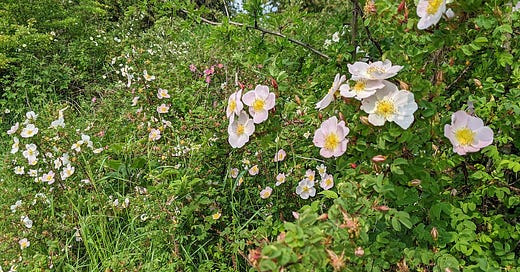



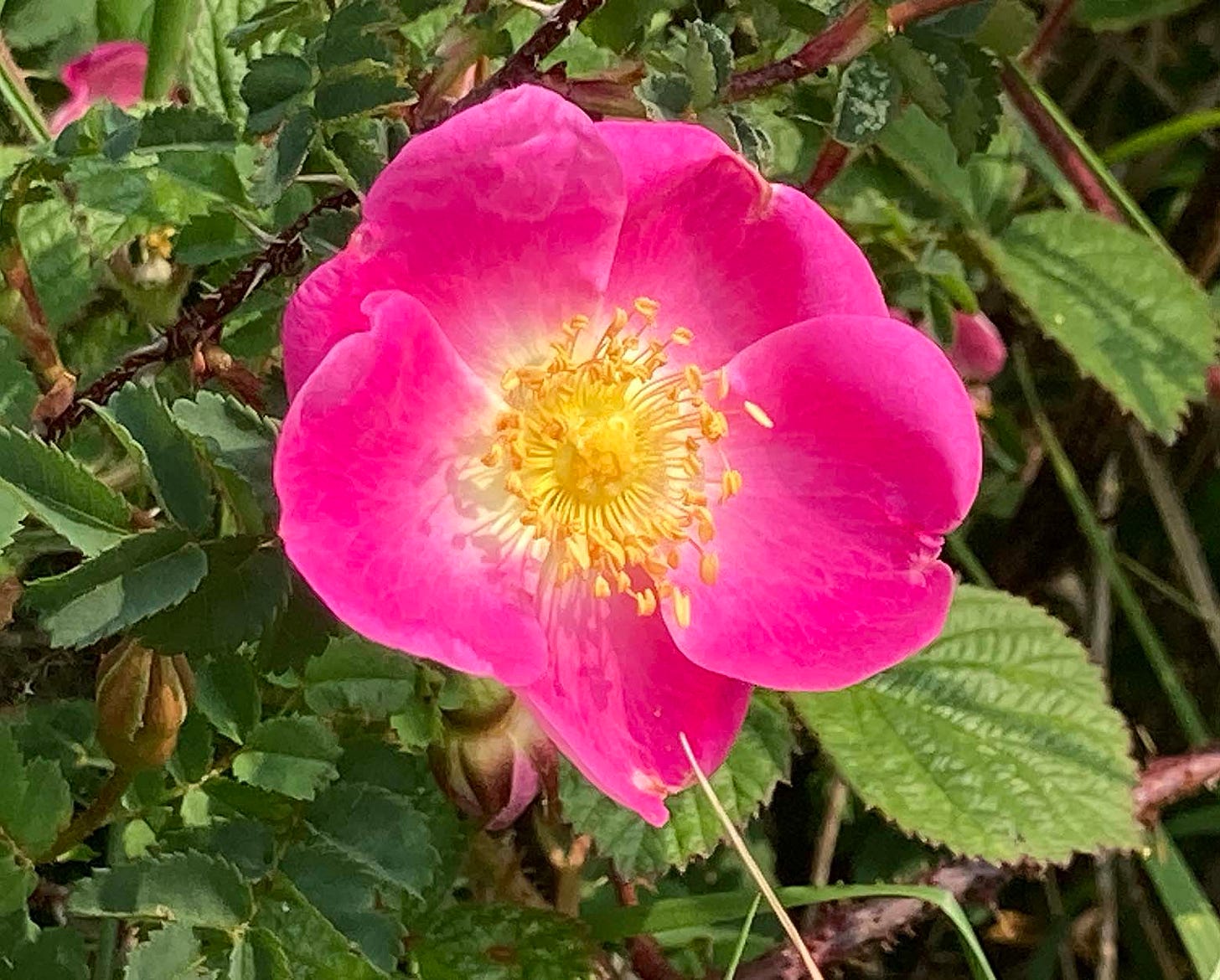
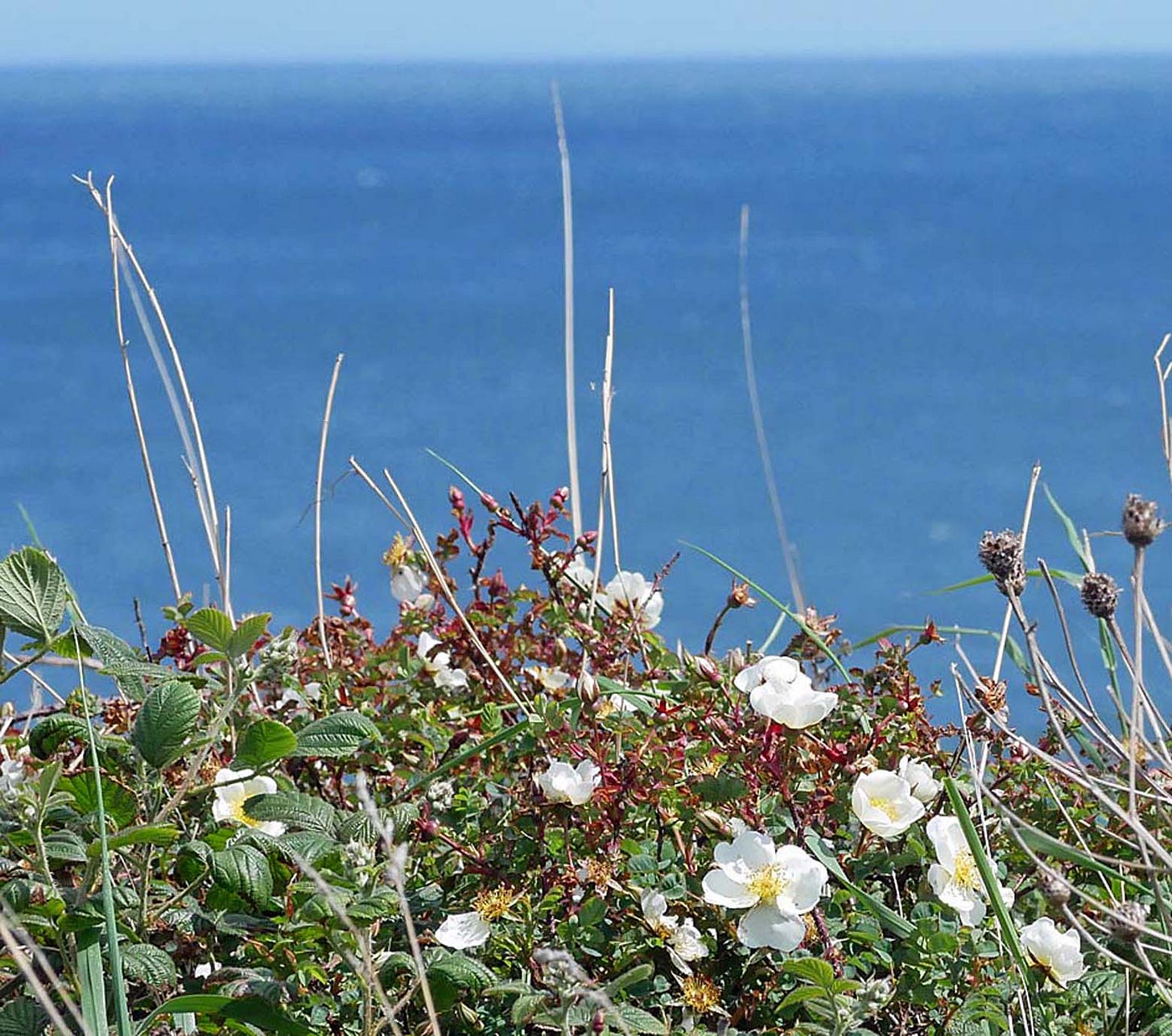
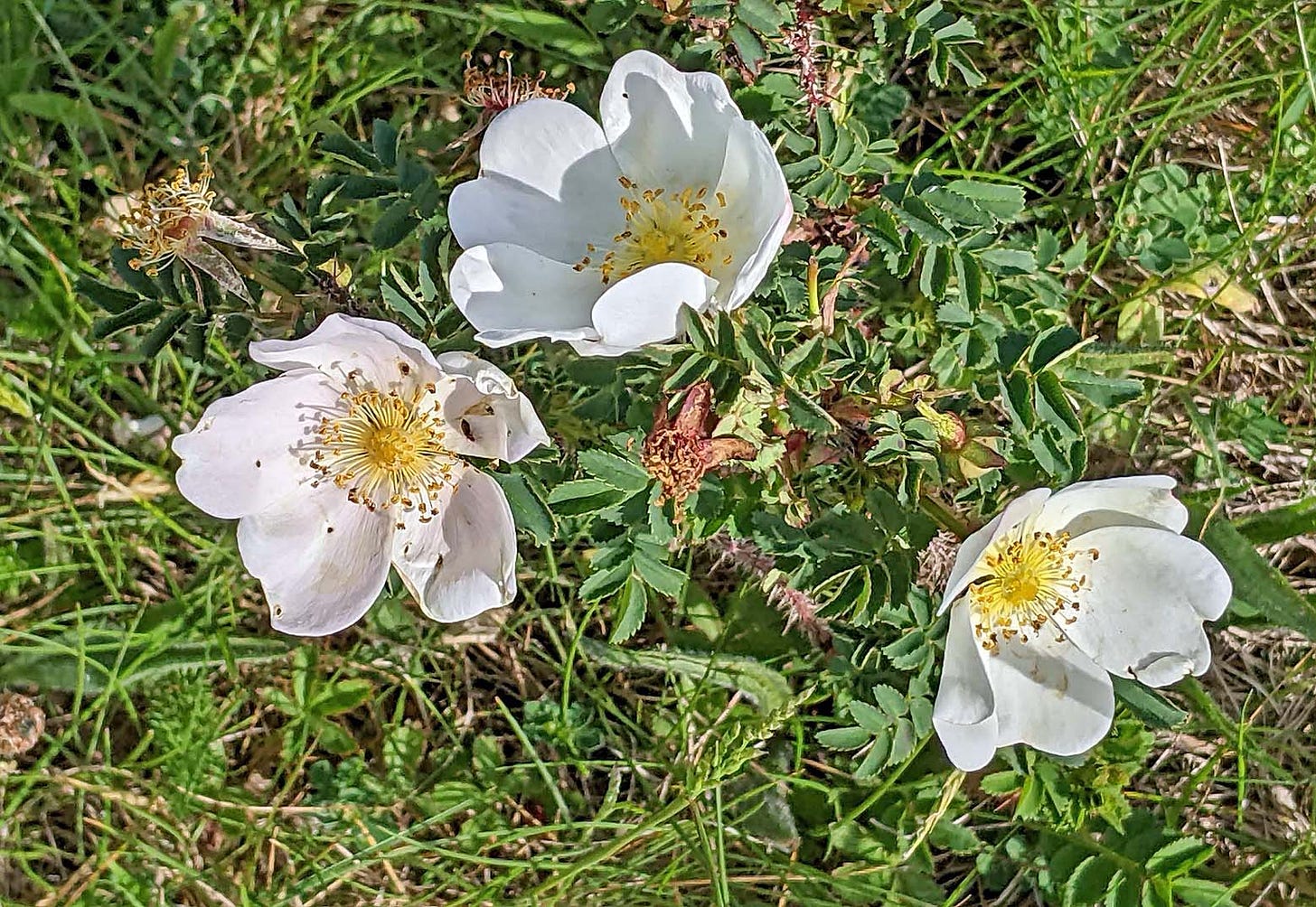
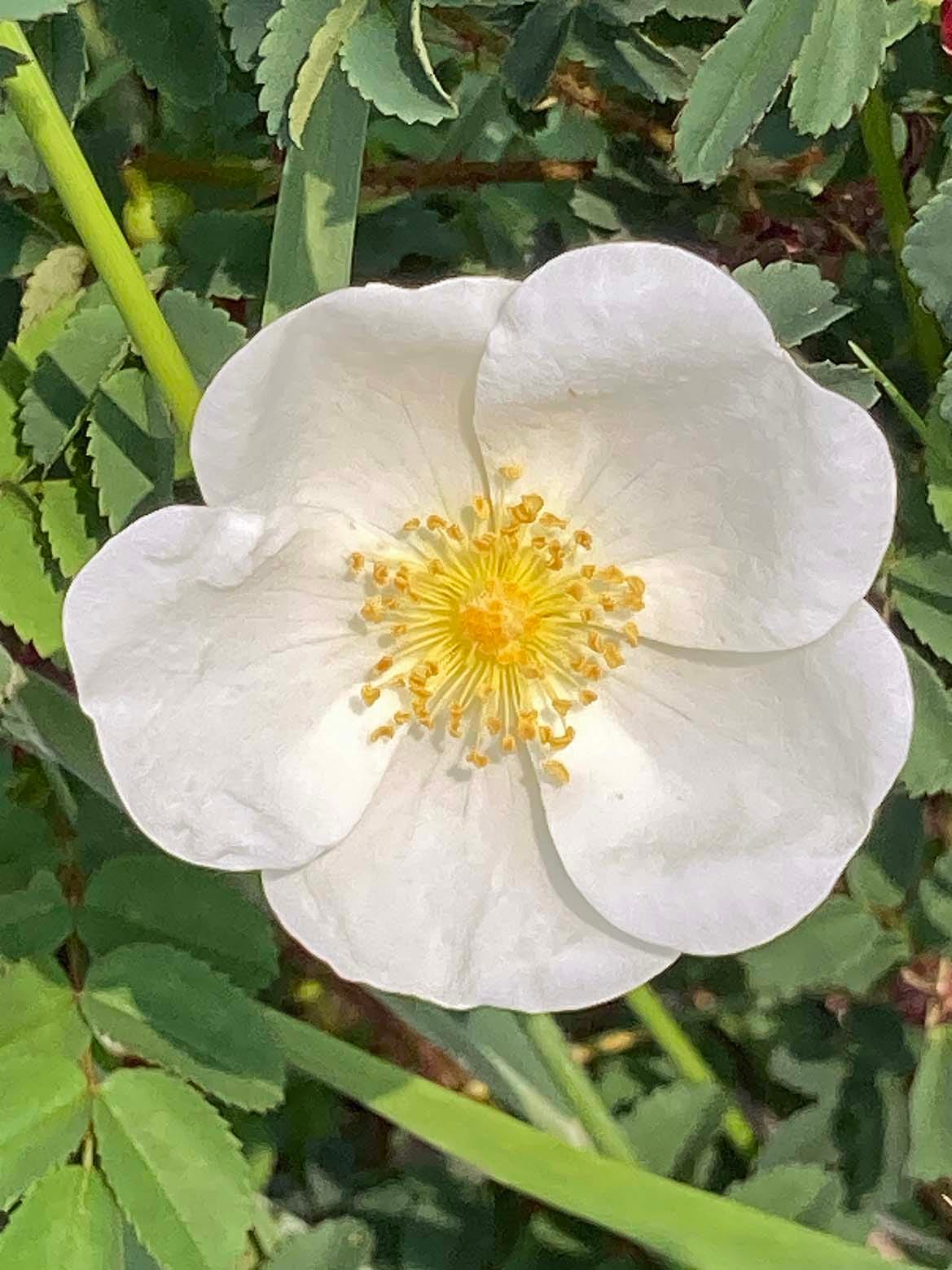
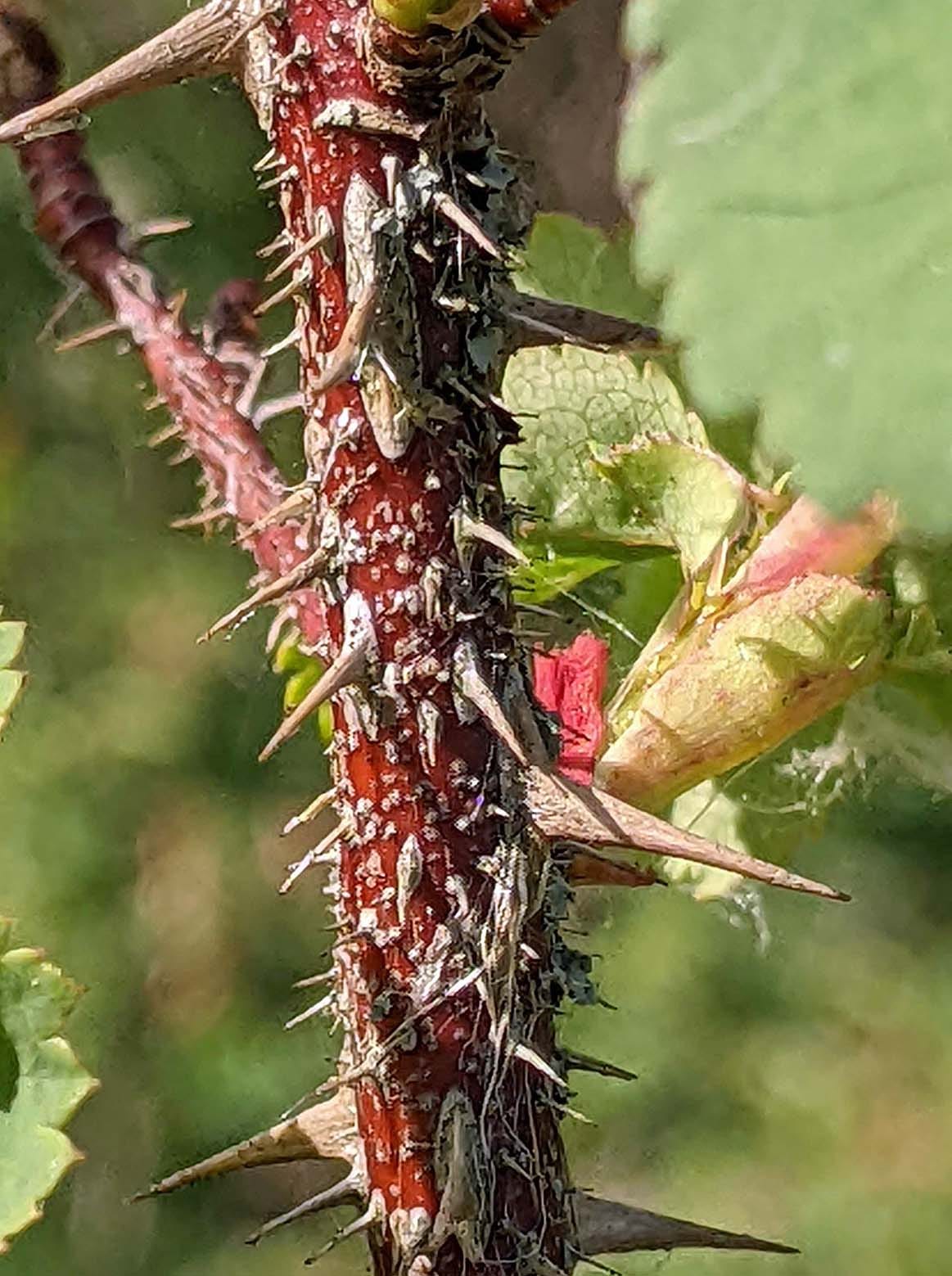
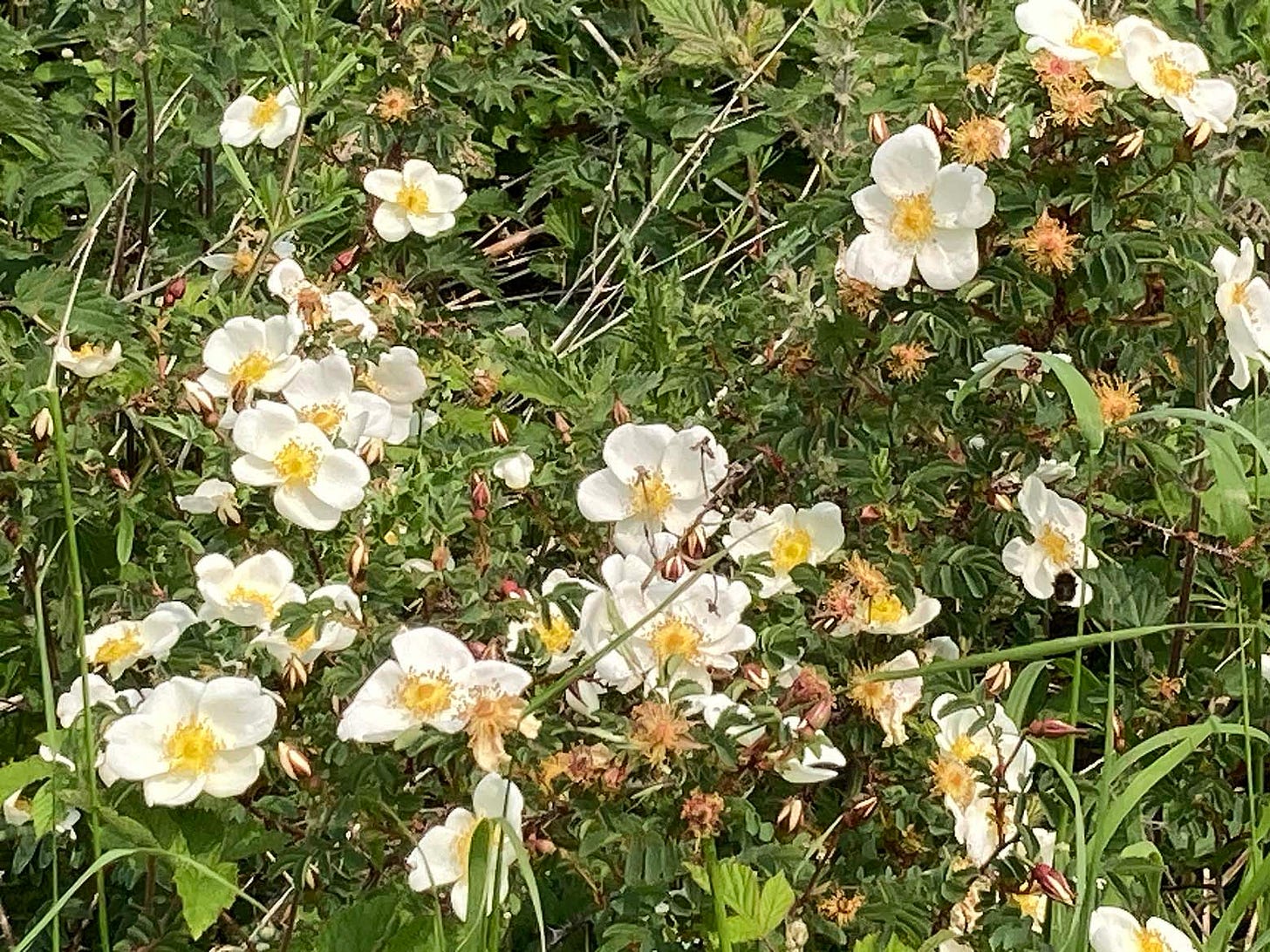
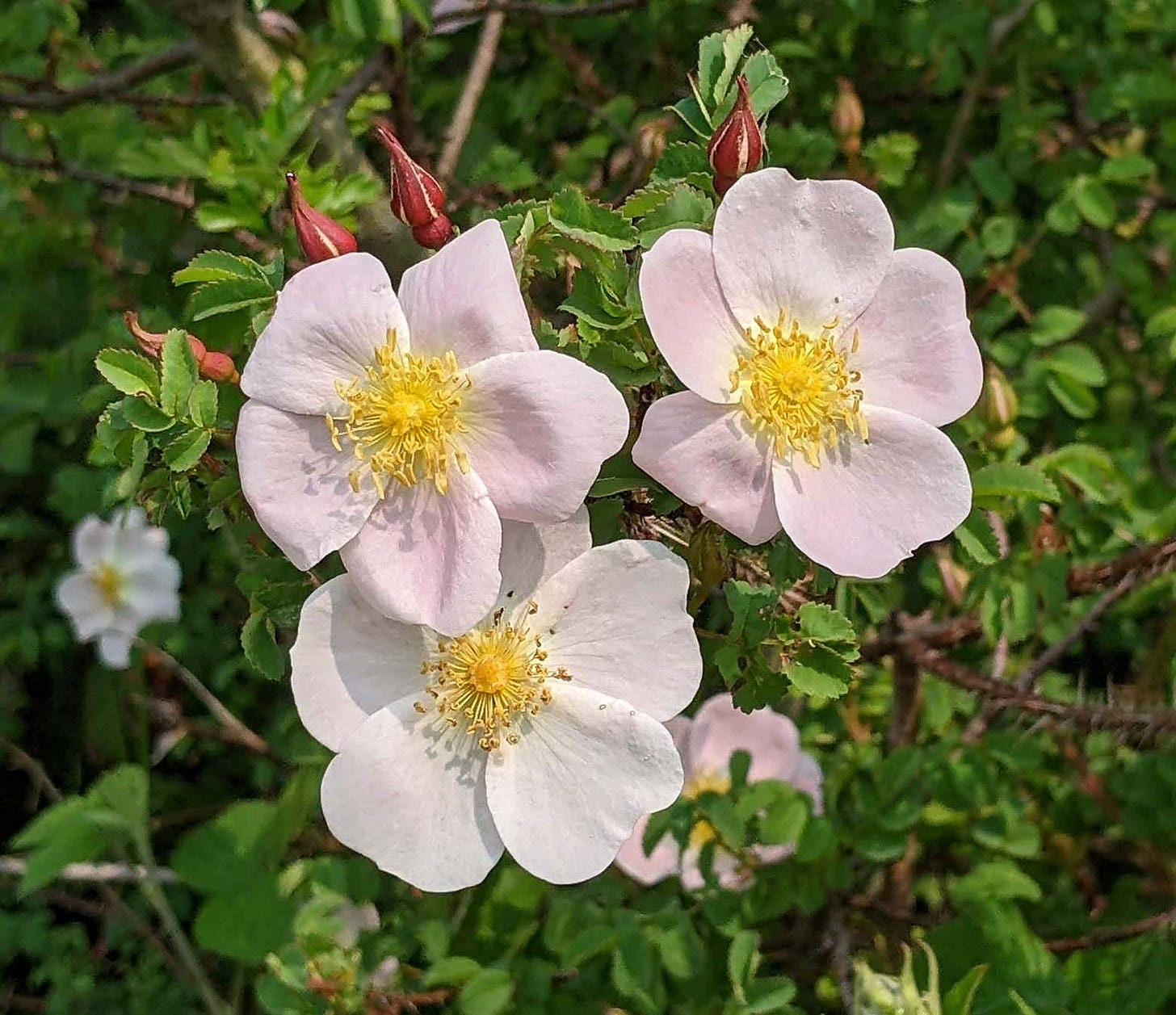
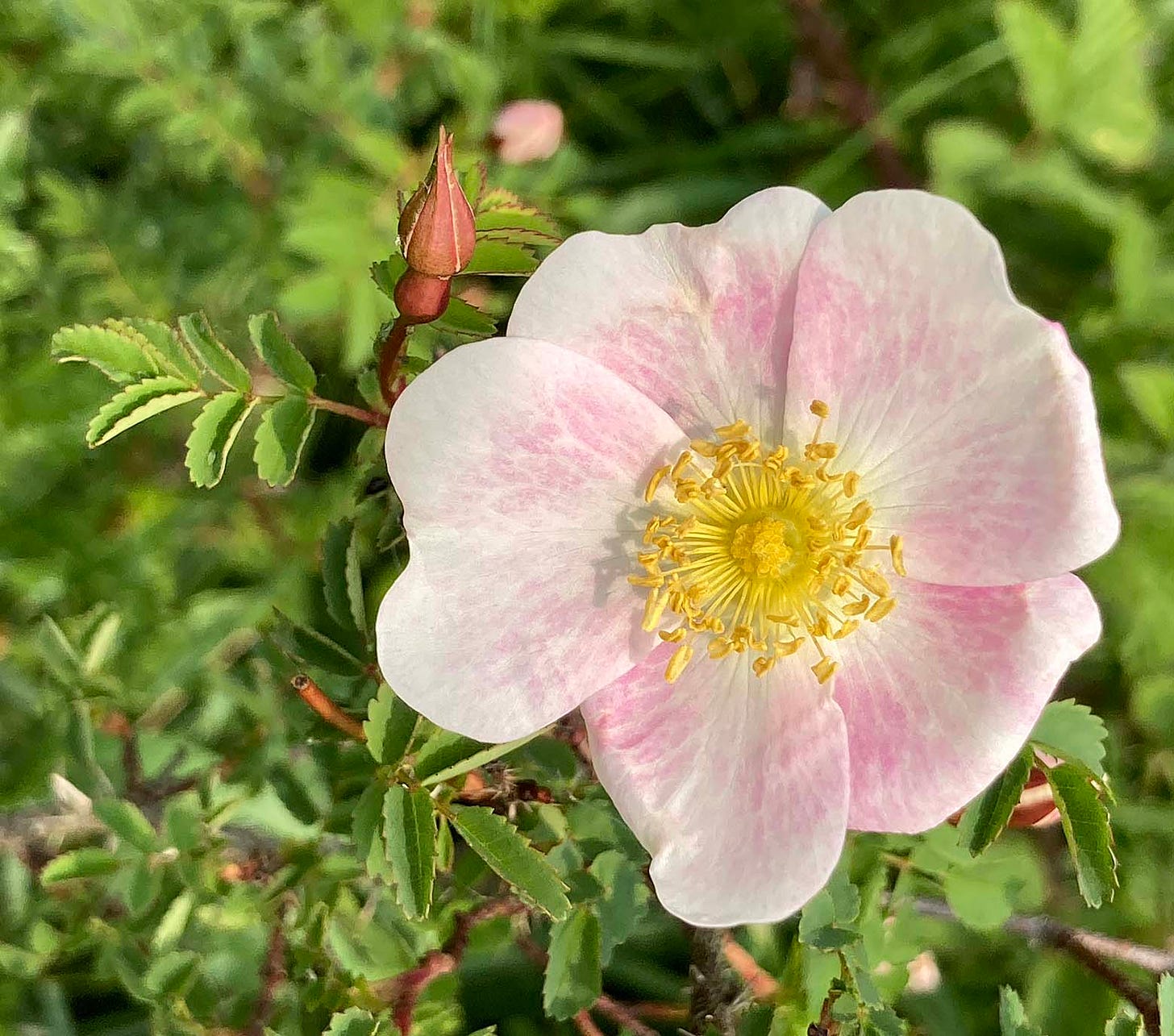
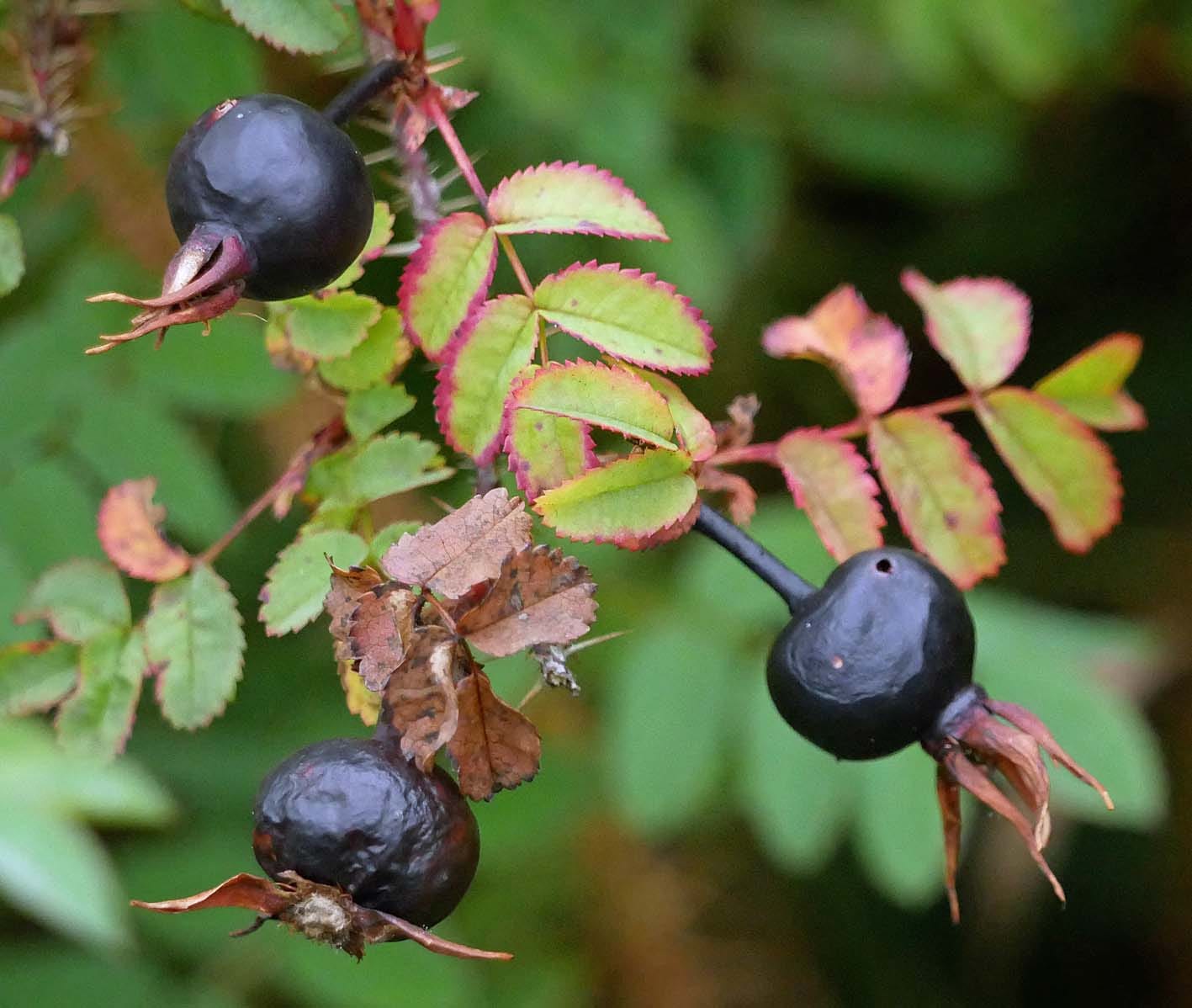
Here in southern Ontario the giveaway for 'ghost gardens' is a lilac. They were planted - the first brought carefully across the Atlantic - in the dooryards of cabins and houses. People died, moved away, farms were amalgamated or abandoned but the lilacs remain.
I'm over Seaham way and other parts of the Durham coastline quite often, on the beaches looking for sea glass. I have never noticed roses growing. Next time I am there, I will look out for these beauties and their vicious spines. ,🙏